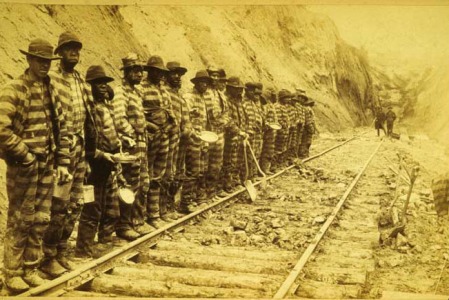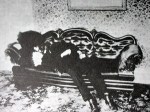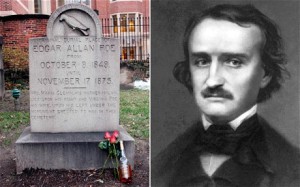
The Hahn Mansion Today (Photo: Realtor.com)
The story of Rudolph Hahn and the Hahn Mansion began in the silver mines of Montana and ended in a seedy boarding house in Spokane, Washington. It’s a tale of wealth, divorce, intrigue, death, and murder, whose spirits, some claim, linger to this day.
On September 5, 1908, the president and largest shareholder of the Hecla Mining Company, John Smith, died, leaving his vast fortune and major interest in the company to his recently wed wife, Sarah. In 1916, Sarah and her new husband, Ralston “Jack” Wilbur, spent $75,000 (nearly $1.7 million in today’s dollars) on the construction of a sprawling mansion on Spokane’s South Hill. Contemporary newspaper accounts reported that famed Spokane architects G. A. Pehrson and Kirtland K. Cutter collaborated on design of the palatial home, which featured gold leaf carvings, mother-of-pearl inlays, and beamed ceilings.
Not long after completion of the home, Sarah divorced Jack Wilbur and sold the home in 1918 to a druggist named William Whitlock. In turn, Whitlock sold the home in 1924 to one Randolph Hahn. It was during Hahn’s residency that the story of the home became “interesting” to say the least. If nothing else, Randolph Hahn certainly left his mark on the history of Spokane.
Hahn began his professional life as a painter and barber. Around 1885, Hahn married Annie Tico. The 1910 census lists Hahn, his wife, and five children living in a rented home at 613 Washington Street in Spokane. Hahn’s occupation is listed as “x-ray specialist.” However, by the 1920 census, 53-year-old Hahn is now shown as married to 21-year-old Sylvia Fly, with no mention of Annie or Hahn’s children. Moving up in status, the census lists Hahn as a physician engaged in private practice.
Without ever having spent a day in medical school, Hahn began amassing his own fortune. “Doctor” Hahn’s specialty involved electro-therapy as a purported cure for a variety of ailments, along with a side business performing illegal abortions for wealthy clients. Part of the $50,000 in improvements he made after purchasing the mansion from Whitlock reportedly included the addition of secret passages to help maintain the anonymity of his clients, as well as gutters carved into the floor of the basement to aid draining blood from his operating room following one of his “procedures.”
Living in the Great Gatsby-like world he created, Hahn earned a reputation as an eccentric and a partier. Reports from the time describe him as always appearing well-dressed in the finest suits, but clad in slippers. Even during prohibition, the Hahn residence was well known for wild, alcohol-fueled parties. During one of his parties, a drunk Hahn apparently drove his car into the swimming pool. Much to the chagrin of his neighbors, he also developed an interest in radio, hanging speakers around his home playing loud music at all hours of the day until a court-order forced him to stop. Given Hahn’s guest list of the rich and famous of Spokane at the time, it seems the police generally turned a blind-eye towards his antics.
His relationship with Sylvia proved tumultuous, with witnesses often reporting heated arguments, including one in which Hahn apparently suffered broken ribs. The couple even divorced for a time, but later remarried as evidenced by a marriage certificate from June 8, 1933. The turbulent relationship came to an ultimate conclusion on May 2, 1940. Following a particularly violent row, Sylvia was discovered dead in her bedroom with a bullet wound to her head. Despite the official ruling of suicide, multiple other bullet holes were discovered in the bedroom wall. Hahn claimed these resulted from his bouts of indoor target practice – and the officials accepted his story.
Hahn’s wild, party-filled lifestyle continued for a few years after Sylvia’s death – along with Hahn’s illegal abortion clinic. Unfortunately for Hahn, one of his “patients,” a young woman from Mullan, Idaho, died on his operating table while undergoing an illegal abortion. Although he’d escaped similar charges in the past, this time he wasn’t so lucky. In 1945, a jury convicted Hahn of manslaughter. He received a $1000 fine and probation. However, the conviction destroyed his reputation and ended his “medical” career, forcing Hahn to sell his mansion and move into a rooming house, the New Madison Apartments, in downtown Spokane – a far cry from his former opulent lifestyle. Hahn met his fate on August 6, 1946, when an attacker plunged a bayonet through Hahn’s heart. A traveling hearing aid salesman, Delbert Visger, eventually confessed to the murder, claiming robbery as a motive. Yet, rumors persisted that it was actually revenge for a botched procedure carried out on the man’s wife by Hahn years prior.
Given the history, not surprisingly rumors of hauntings of the Hahn Mansion persist to the present day. Over the years, witnesses have claimed to hear sounds of crowds partying, loud arguments, shrieks from Hahn’s former patients, gunshots, and even the figure of a woman who appears on the staircase. All, of course, taking place when only the witnesses were present in the home. Since the home is once again an elegant private residence, it seems the current owners alone know if such activity is still (or ever was) taking place…
[©2018 All rights reserved. This copyrighted material may not be reposted or reproduced in any form without permission.]










Ghosts of the White Eagle Saloon
Posted in Commentary, History, Investigations, Locations with tags Ghost Hunting, Ghosts, Historic Site, Oregon, Paranormal, Portland, Stories, Strange Tales, White Eagle on February 8, 2016 by S. P.White Eagle Saloon (Photo: McMenamins)
Located in one of the oldest sections of Portland, Oregon, close to the docks and railyards, the neighborhood around the White Eagle Saloon has held a reputation as rather “rough and ready” for most of its history. As the decades progressed, many of the older buildings around the White Eagle found themselves demolished and the area becoming increasingly industrial. However, in keeping with its tough reputation, the White Eagle soldiered on, continually operating as a bar, but also at times alternately as a brothel, cheap hotel, and rooming house. The building itself is two-story brick, about thirty feet wide, seventy feet long, and forty feet tall. The White Eagle is currently a “hip” corporate-owned saloon hosting live music on the main floor and a small historic hotel on the second floor. Along with continuing to host spirits of the alcohol kind, the White Eagle also, apparently, continues to play host to a number of spirits from beyond the grave.
Ghostly manifestations include disembodied voices and mysterious apparitions. Previous owners and employees reported hearing a woman crying on the second floor, only to find it completely deserted upon investigation. In connection with this voice, there are also reports of a vaguely human, teardrop-like form appearing in one of the second floor windows. Additionally, witnesses have reported hearing voices and people walking around in the main floor bar area while working alone in the basement after closing. One unusual report involves a toilet in the men’s room. Witnesses claim to hear in the quiet after closing footsteps leading to the men’s room, the men’s room door open and close, and then the toilet flushing. The only truly distressing report occurred several years ago when a waitress claimed to have been pushed from behind by invisible handles while going down the stairs to the basement. A bartender and doorman who rushed to assist her claim a mop bucket at the top of the stairs came flying towards them. Not surprisingly, the waitress reportedly quit her employment the following day.
The White Eagle certainly has a reputation as a tough and shady joint. The first bar at the location, B. Soboleski and Company Saloon, open in 1905 in a 1880s wood frame building. The present brick building opened in 1914 with a change in ownership and name to the Hryszko Brothers Saloon. During its heyday, the area teemed with saloons filled with dockworkers, rail workers, sailors, and prostitutes. The neighborhood itself served as a melting pot of Chinese, Russians, Germans, Slavs, and Poles. Many saloons in the area, including the Hryszko Brothers Saloon, were rumored to have tunnels leading directly to the wharfs used to shanghai sailors. Reputedly, prostitutes lured unwary drunks to the basements of the establishments with a promise of fun, where waiting thugs rendered the man unconscious, robbed him, and then used the tunnels to dump him on the streets (if he was lucky) or sell him to sea captains in need of crew (if he was especially unlucky). According to legend, the “shanghai tunnel” at the White Eagle was filled-in during the 1910s. However, the Hryszko brothers’ establishment held a reputation for gambling and prostitution. Even after Oregon Prohibition in 1917 forced a name change to the Hryszko Brothers Soft Drink Emporium, old-timers claimed illegal activity and alcohol continued to flow freely.
In 1938, another name change brought the Hryszko Brothers Restaurant and Beer Parlor and an improved reputation. During World War II the bar became known as the Blue Eagle Cafe and business boomed with workers from the nearby shipbuilding yards. A further change in 1941 ushered in the current name: the White Eagle Cafe and Saloon – reportedly a nod to the white eagle on an early Polish flag. Never considered a great neighborhood, the area around the White Eagle slipped into economic decline during the 1960s, with the White Eagle changing hands from the Hryszkos family to Tony Ferrone and becoming known as a rowdy “biker bar.” Things changed in 1978 when a tool and die maker named Chuck Hughes fulfilled his dream of owning a bar by purchasing and “cleaning up” the White Eagle. He continued to run the White Eagle for many years until it finally passed into current ownership by the McMenamin’s company in 1998.
There are certainly spirits of one kind or another still holding court at the White Eagle. Whether only of the liquid kind or also of an otherworldly nature is left to the decision (and imagination) of the reader…
[©2016 All rights reserved. This copyrighted material may not be reposted or reproduced in any form without permission.]
Share this:
Leave a comment »